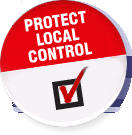State Status
No Preemption
News Summary
10 years in the making, smoke-free workplace bill reaches Alaska Legislature
Publication Date: 2014-03-25
- Author:Suzanna Caldwell
- Publication:Alaska Dispatch
Workplace smoking bans are in effect in Alaska communities that comprise about half the state's population. Proponents of a statewide ban have a bill in the Legislature, but opponents have been vocal in their testimony against the proposed law.
For more than a decade, anti-smoking advocates have fought to make workplaces smoke-free. They started small, working at the local level, steadfastly bringing indoor smoking bans first to Bethel in 1998, and then slowly but surely to other communities in Alaska. In all those years, they've managed to cover about half of the state's population.
But advocates say they've done about all they can when it comes to regulating smoking at the local level, and now it's time to think bigger --Â statewide big.
Tuesday the Alaska House Health and Social Services committee heard House Bill 360 --Â sponsored by Anchorage Rep. Lindsey Holmes -- which would prohibit smoking in indoor workplaces. It's the furthest a statewide workplace smoking ban has made its way through the Legislature, something that in some ways has been intentional, according to Mike Gutierrez, Alaska grassroots relationship manager for the Alaska American Cancer Society Cancer Action Network.
"This is the first time we've felt like we had the ability to have a bill introduced, much less get one passed," he said.
It's been a slow build, focusing on education and getting smoking laws passed in individual Alaska communities. Since the first ban in Bethel, smaller communities like Valdez, Unalakleet, Dillingham, Haines and Palmer have passed them, as have larger ones --Â including bans covering the 30,000 residents of the state's capital in Juneau, along with Anchorage, Alaska's largest city and home to about a third of the state's population.
But even with those bans, plenty of other Alaskans are not covered. Second-class boroughs, like the Matanuska-Susitna, Kenai Peninsula and Fairbanks North Star borough do not have health powers and cannot implement smoking bans borough-wide. The unorganized borough, which includes 70,000 Alaskans and communities like Dillingham, Unalaska and Cordova, also cannot enact a smoking ban. The Legislature is supposed to serve as the governing body for the borough, though such a meeting has never been held in more than 50 years of statehood. A statewide ban would cover those communities and "level the playing field," Gutierrez said.
Marge Stoneking, Alaska director of the American Lung Association, has been with the organization for the last 10 years and watched that slow and steady change towards greater acceptance of smoking bans.
She noted that the Anchorage ban, first passed in 2001 and again with a second, more comprehensive version in 2006, has really helped change attitudes in Alaska. That wasn't immediately clear, she said, until Anchorage residents turned down a voter initiative that would amend some of the more comprehensive elements of the law by an overwhelming majority (76 percent came out against the initiative). Stoneking said that turnout showed a marked change.Â
"That was huge in terms that people get it and (smoke-free workplaces) are important to them," she said...
